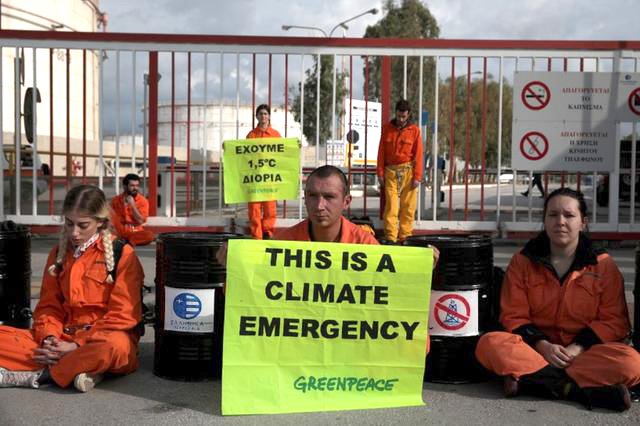You can tuck your head between your knees and kiss your target of ‘not-more-than-1.5-degrees-Celsius-warming’ goodbye.
Trump is out and Biden is in, and you will hear a lot of talk about meeting that never-exceed +1.5°C limit. The blather began on Thursday, when the US president convened his ‘Climate Leaders’ Summit’ (virtual), and ends in November in Glasgow with COP-26, the five-yearly United Nations climate meeting where the commitments actually get made.
But it is already clear that the Glasgow meeting cannot keep the warming under +1.5°C. That target was close to impossible when they adopted it at the last big climate summit in Paris in 2015, and that train has now left the station.
This is not a licence for despair. Cutting greenhouse emissions is still important and urgent, but the issue is now also how to deal with much more dangerous warming. We will need new strategies and new technologies to contain the damage, but first – how can we know for sure that we will go through +1.5°C by 2035, or possibly even by 2030?
By the numbers. The scientific consensus is that 430-435 parts per million (ppm) of carbon dioxide in the atmosphere will commit us to +1.5°C. We are now at 415 ppm, and in an average year we put about another 2.5 ppm into the atmosphere. So we have at the most 20 ppm left to play with before we commit to +1.5°C, and we will cover that distance by 2029.
Or rather, we’ll get there by then if we don’t cut our emissions very fast. In fact, we have to cut them by half in 2030 if we want to be safe. But even in the plague year of 2020 we only cut our emissions by 7 per cent. Most years we don’t cut them at all.
It’s the Nationally Determined Contributions (NDCs) that tell the tale. NDCs were an innovation of the Paris summit in 2015, designed to break the deadlock that had paralysed previous summits.
Instead of arguing endlessly about how much each country should cut, every country was just asked how much it was willing to cut. They’d presumably be too embarrassed to say ‘nothing’, so at least that way we’ll get something done.
By the way, this was why Donald Trump looked so foolish when he demanded to renegotiate the US emission cuts that Barack Obama had promised. There was no negotiation in 2015. Each country’s obligation was whatever it offered. The only person Trump could have renegotiated with was Obama, and only if he had a time machine.
Anyway, here we are in 2021, and theory was that at this summit (originally scheduled for 2020) every country would raise its target for emissions cuts. We need 50 per cent emissions cuts by 2030 to stay below the +1.5°C limit. How’s that working out?
Russia and the United Kingdom are the stars among the major countries, offering 70 per cent and 68 per cent cuts in their emissions respectively compared to 1990 (but that’s only because they massively de-industrialised in the 1990s). The whole European Union will make 55 per cent cuts compared to 1990. If everybody else did the same, we’d be home and dry by 2030.
The United States says 50-52 per cent cuts and Canada says 40-45 per cent cuts, but only compared to 2005. (They moved the goalposts.) Japan says 46 per cent cuts, but only compared to 2013. Mexico and Australia are in the mid-20s, India and Indonesia won’t set a number at all, and China says it will try to ‘peak’ its emissions by 2030 (ie they will continue to grow every year until 2030).
In other words, the countries responsible for more than half the world’s emissions are making no promises (their NDCs contain no numbers). Some, like China and India, will still be raising their emissions throughout this decade. Even if those who make promises actually keep them, we will end up in 2030 with a global cut of 30 per cent at best. So wave goodbye to ‘no more than 1.5°C of warming’.
What do we do now? Starting with COP-26, we start developing ways to get carbon dioxide back out of the atmosphere (Carbon Dioxide Removal – CDR), and to hold the heat down while we work on that (Solar Radiation Management – SRM). And we work as fast as we can to get our emissions down, because the other stuff is just short-term techno-fixes.
CDR and SRM were both discussed at the 2015 summit, but now we need to start spending serious money on them. We’re going to need them in the 2030s, and neither the science nor the technology will be ready overnight. Ten years might be enough. It had better be enough.
Gwynne Dyer’s new book is ‘Growing Pains: The Future of Democracy (and Work)’







Click here to change your cookie preferences